- Remove Article filter Article
- Remove Livelihood and Craftsmanship filter Livelihood and Craftsmanship
- Remove Industry, Energy and Natural Resources filter Industry, Energy and Natural Resources
- Remove Settlements, Villages, Towns filter Settlements, Villages, Towns
- Remove Plant life filter Plant life
- Remove Arkeologi filter Arkeologi
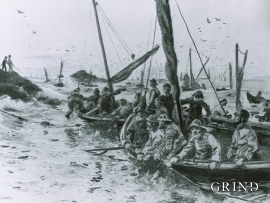
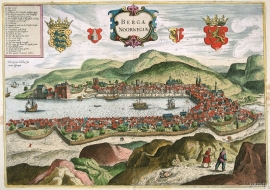
Bergen – The Urban Community
Bergen - our first royal residence city – has for centuries been Norway’s, and for long periods, Scandinavia’s biggest city. The historical monuments round the Vågen bay tell us that the city has been of national, historical significance.
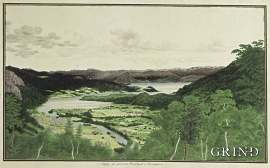
Earth and stone
"Humus" is a word with great meaning. It is the soil we live from, in addition to the resources we get from the ocean. This layer of earth - sometimes appearing as loose fertile organic matter; other places as scanty and acidic soil - is found in varying thicknesses over the bedrock. It is the result of 10,000 years of breakdown and erosion following the last ice age, and then several thousand years of cultivation in more recent times. The soil we can buy at the garden centre is a different product than the "natural" humus layer, formed of processes occurring far under the earth's surface. If you dig your spade into the soil where it has not been ploughed before, you will see that there is a big difference in colour, soil structure, moisture and stone content. We might say that the soil is fertile and easily worked some places, whereas other places folk might have given up trying to grow anything on their small patches of land, which then become overgrown with birch and thicket. Modern agriculture does not have room for small stumps between the piles of stone. Nowadays, machines do the job, and they require a lot of space and flat ground.

From Dense Forest to Open Heathlands
The outer frame - the coast, the fjord and the mountains - are an inheritance from the country's geological history. But what, more than anything else, gives the scene colour and excitement is the plant life.

Sailing Sloops and Boat Building
Marine activities expanded greatly throughout the 19th century, and provided a livelihood for many people. Fishing and shipping were probably the subsidiary activities which had greatest economic significance throughout the century. Marine activities brought, literally speaking, wind into the sails of many rural districts in Hordaland during that period.
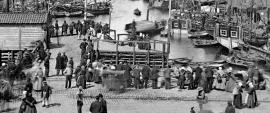
The City and the Stril country
The relationship between Bergen and its neighbouring districts, normally known as “Strilelandet”, has, over the centuries, given rise to greater conflicts than the contacts between any other Norwegian city and its nearest hinterland.
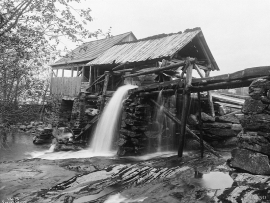
The Pine Forest, the Sash Saw and the Scots Trade
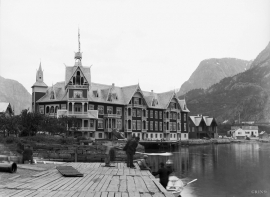
The Tourists, the Landscape and the Fantasy Hotels
Tourist travel in western Norway experienced its great breakthrough with the regular scheduled steamship traffic.
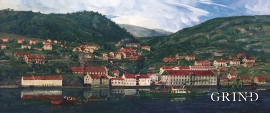
The Urban Settlements
The development of urban settlements after 1850 is a historic process of great significance for the cultural landscape. Besides the great land reforms and the new ways of working in agriculture, the changes in the settlement pattern and the building of a road network with roads, bridges and cuttings were the single factors which have most significantly contributed to the metamorphosis of the county’s physical visage in the last 150 years.
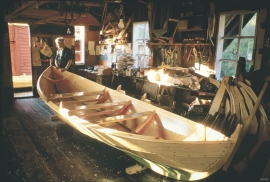
The Wooden Boat
Craftsmanship through two thousand years


